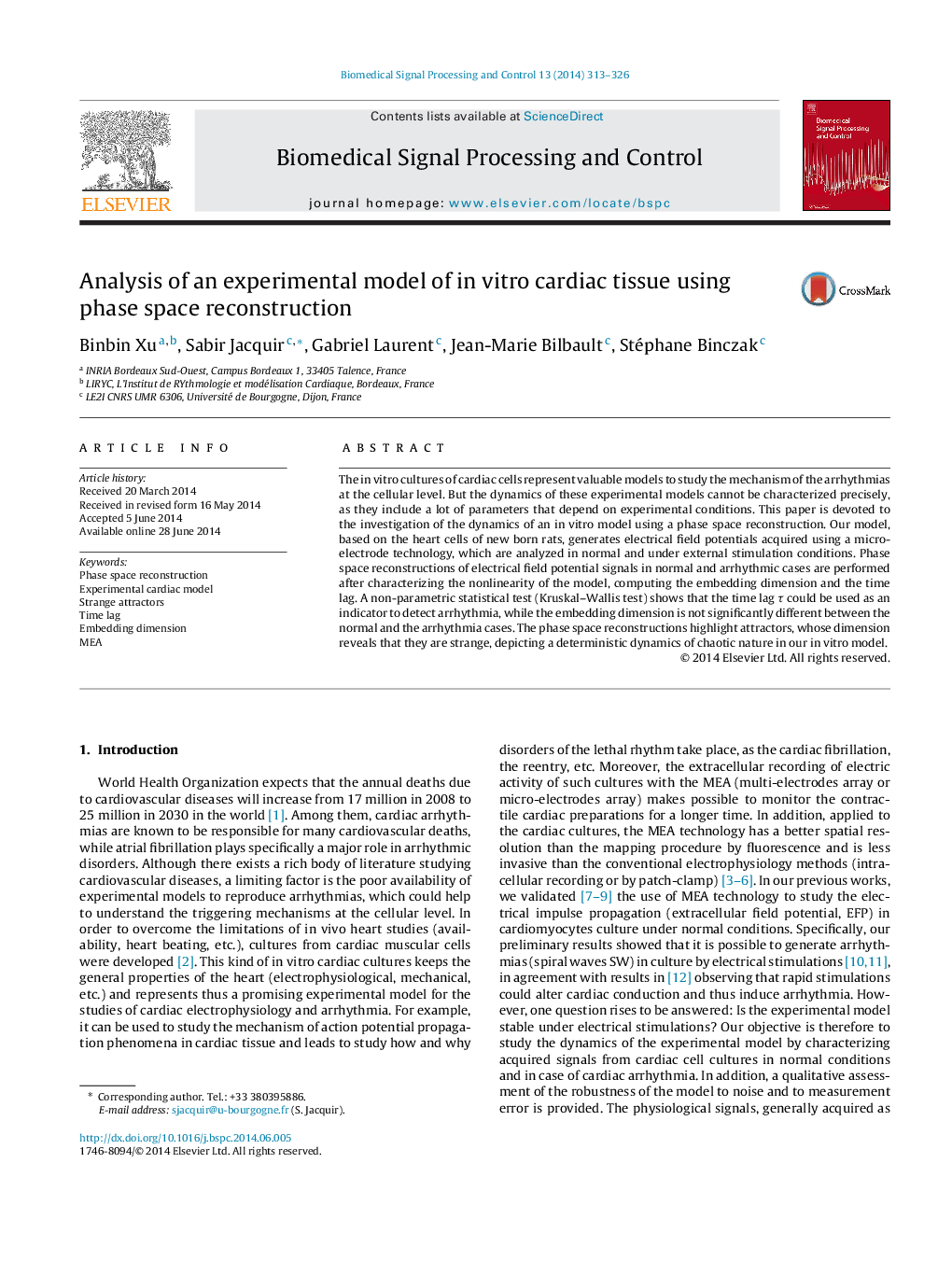| Article ID | Journal | Published Year | Pages | File Type |
|---|---|---|---|---|
| 562598 | Biomedical Signal Processing and Control | 2014 | 14 Pages |
•The in vitro cultures of cardiac cells are valuable models to study the arrhythmias at the cellular level.•The possibility to reconstruct a mathematical model from experimental data in order to characterize it from a dynamical point of view is performed.•Phase space reconstructions in normal and arrhythmic signals highlight strange attractors.•The time lag, the fractal and correlation dimensions could be used for classification feature.•The embedding dimension is robust against external perturbation.
The in vitro cultures of cardiac cells represent valuable models to study the mechanism of the arrhythmias at the cellular level. But the dynamics of these experimental models cannot be characterized precisely, as they include a lot of parameters that depend on experimental conditions. This paper is devoted to the investigation of the dynamics of an in vitro model using a phase space reconstruction. Our model, based on the heart cells of new born rats, generates electrical field potentials acquired using a microelectrode technology, which are analyzed in normal and under external stimulation conditions. Phase space reconstructions of electrical field potential signals in normal and arrhythmic cases are performed after characterizing the nonlinearity of the model, computing the embedding dimension and the time lag. A non-parametric statistical test (Kruskal–Wallis test) shows that the time lag τ could be used as an indicator to detect arrhythmia, while the embedding dimension is not significantly different between the normal and the arrhythmia cases. The phase space reconstructions highlight attractors, whose dimension reveals that they are strange, depicting a deterministic dynamics of chaotic nature in our in vitro model.
